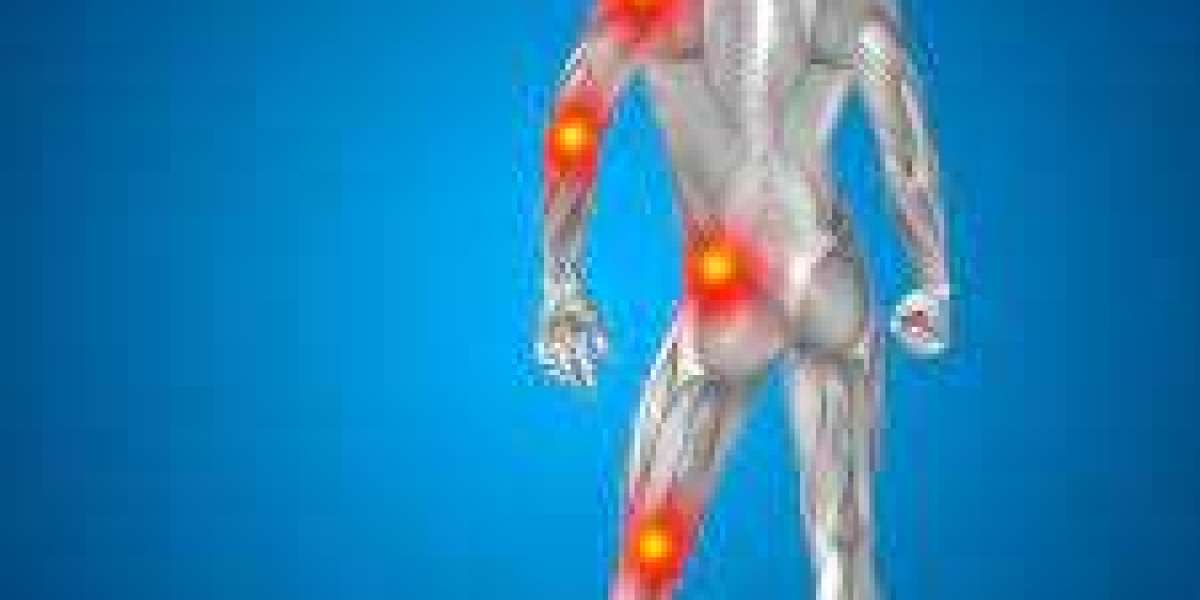Understanding Pain Signals: How Your Body Communicates Pain
As a vital warning system for the body, pain is an essential component of the human experience. It notifies us of possible danger, illness, or injury, and then we act to safeguard ourselves. Gaining understanding into the production and transmission of pain signals can be extremely helpful in both properly managing pain and preserving general wellbeing.
The Fundamentals of Perceived Pain
The feeling of pain is intricate and multidimensional, encompassing both mental and physical aspects. There are two primary categories of pain management: acute pain and chronic pain. Acute pain usually comes from injuries, surgeries, or other transient conditions and is transient in nature. It acts as a safeguard, motivating us to stay away from behaviors that could make the injury worse. Conversely, chronic pain lasts for months or even years and is linked to long-term ailments like fibromyalgia, arthritis, or nerve damage.Nociception is the first step in the feeling of pain. Specialized sensory receptors called nociceptors are distributed throughout the body, with a concentration in the skin, muscles, joints, and internal organs. These receptors translate dangerous stimuli—like intense heat, pressure, or chemical irritation—into electrical signals. Once triggered, nociceptors send these signals to the spinal cord, brain, and other parts of the nervous system where they are processed as pain.
How The Pain Signal Is Produced
Nociceptor reaction to mechanical, thermal, or chemical changes occurs when the body is exposed to a potentially damaging stimuli. Thermal nociceptors in your skin, for instance, sense extremely high temperatures when you unintentionally contact a hot stove. In a similar vein, mechanical nociceptors react to excessive stretching and tissue injury when you sprain your ankle.Upon activation, nociceptors produce electrical impulses that propagate via afferent fibers, which are nerve fibers. A-delta fibers and C fibers are the two primary afferent fiber types involved in the transmission of pain. A-delta fibers may transport messages swiftly because they are myelinated, which means they have a protective covering. The sudden, intense pain you experience immediately following an injury is caused by them. Conversely, unmyelinated C fibers move more slowly when transmitting signals. They are linked to throbbing, dull, or painful pain that could last longer than the original damage.
The Path Pain Signals Take to Enter the Brain
Nociceptor-generated electrical impulses proceed to the spinal cord via afferent fibers, arriving at the dorsal horn region of the cord. Before the impulses are sent to the brain, they are processed and altered here. As a relay station, the dorsal horn modifies, amplifies, or decreases pain signals according to a range of circumstances, including emotions, past experiences, and the presence of other sensory inputs. After the pain signals enter the brain, the thalamus, somatosensory cortex, and limbic system are some of the areas that process them. As a central relay station, the thalamus routes messages to the right regions for additional processing. The limbic system is engaged in the emotional reaction to pain, whereas the somatosensory cortex interprets the type, location, and intensity of the pain.
Neurotransmitters' Function in the Transmission of Pain
The transmission and regulation of pain signals are significantly influenced by neurotransmitters. Neurotransmitters like glutamate and substance P are released by activated nociceptors, and these bind to receptors on nearby neurons to intensify the pain signal. Hyperalgesia, or a heightened sensitivity to pain, is a possible outcome of this process, which is called pain sensitization. On the other hand, the body also has systems in place to block pain signals and lessen the experience of pain. Natural painkillers called endorphins and enkephalins attach to opioid receptors in the brain and spinal cord to prevent the transmission of pain signals. The efficacy of opioid medicines in the treatment of severe pain is based on this mechanism. It also emphasizes how crucial it is to use these drugs sparingly in order to prevent reliance and other negative effects.
Comprehending Chronic Pain
Acute pain is a warning sign, but chronic pain sometimes goes undiagnosed and continues long after the primary damage has healed. A breakdown in the pain signaling pathways can cause continuous or sporadic pain signals to be transmitted to the brain, which can result in chronic pain. In addition to being physically incapacitating, this kind of pain management can have severe psychological and emotional repercussions that frequently result in anxiety, sadness, and a lower quality of life.Central sensitization, a condition in which the central nervous system becomes too sensitive to pain signals, is one explanation for persistent pain. Intense pain can be triggered by modest stimuli that are ordinarily painless when in this state. Prolonged exposure to pain, nerve injury, or inflammatory diseases that result in the persistent activation of nociceptors and pain pathways can all induce this heightened sensitivity.
Techniques for Handling Pain
To effectively manage pain, it is imperative to comprehend the mechanisms underlying pain signals. Acute pain is usually treated with over-the-counter analgesics like acetaminophen or nonsteroidal anti-inflammatory medications (NSAIDs) in addition to the rest, ice, compression, and elevation (RICE) protocol.A multidisciplinary strategy is frequently necessary for the management of chronic pain, involving the use of medicines, physical therapy, psychological support, and lifestyle changes. Antidepressants, anticonvulsants, and topical analgesics are a few examples of medications that might assist modify pain signals and offer relief. Mindfulness-based stress reduction (MBSR) and cognitive-behavioral therapy (CBT) are also useful for treating the psychological and emotional elements of chronic pain.
In summary
Pain is a complicated and dynamic sensation that acts as the body's primary alert mechanism. We can create methods to lessen suffering and recognize the significance of efficient pain management by comprehending the production and transmission of pain signals. Pain, whether it be acute or chronic, necessitates a multifaceted strategy that takes into account the psychological, emotional, and physical aspects of this common human experience.




